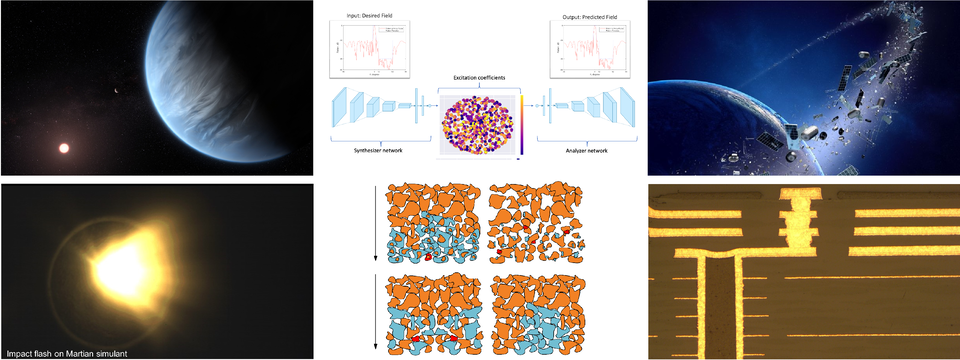Implemented OSIP ideas — September 2022
ESA's Open Space Innovation Platform (OSIP) seeks novel ideas for new space research activities. Campaigns and Channels invite solutions to specific problems or ideas on more general topics, with those run by Discovery & Preparation, including the Open Discovery Ideas Channel, specifically looking for ideas that could be implemented as system studies, early technology developments, or PhD or postdoc research co-funded by ESA and a university.
Open Discovery Ideas Channel

In September 2022, the following ideas were implemented through the Open Discovery Ideas Channel.
--------------------------------------------------
Enabling fast modeling of large interdependent datasets using graphical neural networks
University College London
Characterising exoplanet atmospheres allows us to understand the chemistry, thermal environment, and formation histories of these alien worlds. Complex chemical modelling of these atmospheres is an essential stepping stone towards detecting biosignatures. With the imminent launch of new sophisticated exoplanet missions, we are entering a new era of galactic planetary science. This new wealth of high-quality data poses unprecedented challenges in modelling the complex behaviour of these exotic atmospheres; this co-funded research project aims to find out whether we can use deep learning to speed the modelling up.
--------------------------------------------------
Experimental impacts with martian simulants
University of Kent
Impact cratering provides valuable insight into the near-surface regions of planetary surfaces. In order to understand the impact process on the surfaces of other planets and small Solar System objects, impact experiments have been conducted for decades. However, in a substantial number of these studies, the simulant material constituting the target (and to some extent the impactor) were a proxy, often very different to the real nature of the objects being studied in either composition and/or mechanical properties. This co-funded research project aims to find out whether the use of current Solar System simulant materials affects our understanding and interpretation of the impact cratering processes occurring on Mars.
--------------------------------------------------
Exploration of the Space CArrying capacity ProblEm (ESCAPE)
University of Strathclyde
This co-funded research project will attempt to answer mathematically how many moving objects can co-exist in space and time such that the probability of them colliding is lower than a given value. This could have several space applications: in space safety it would allow one to determine how many (uncontrolled) objects can be placed in a given orbit regime without leading to a cascade of collisions; in formation flying it could be used to find minimum control solutions; in dynamical astronomy we can identify configurations of objects in a cluster that minimise collisions.
--------------------------------------------------
Establishing an approach to determining the physico-chemical properties of cometary nuclei at sub-centimetre scales and their relevance to proto-planet formation using THz spectroscopy
University of Bern
The primary aim of this co-funded research project is to establish novel experimental and numerical techniques for determining how water ice and refractory materials are physically connected within the nucleus of a comet at scales of a centimetre or less. This is motivated by the need to constrain how ices and refractory material combined in the planetesimal formation process in the early epochs of our Solar System.
--------------------------------------------------
Fast design algorithms for antenna arrays using machine learning
TICRA
In the design and operation of array antennas – an antenna type that is made up of many identical smaller 'element' antennas working in unison – control is currently limiting the technology in practice. This is particularly the case for modern arrays, for applications such as accurate Earth observation and telecommunications for global broadband coverage, where hundreds or even thousands of elements are used. This early technology development project will use artificial intelligence to rapidly design and operate high-performing antennas for space-borne communication and environmental observation.
--------------------------------------------------
Novel test methods for the assessment of microvia manufacturing capability
IMEC
Read more about this public idea in OSIP
--------------------------------------------------















 Germany
Germany
 Austria
Austria
 Belgium
Belgium
 Denmark
Denmark
 Spain
Spain
 Estonia
Estonia
 Finland
Finland
 France
France
 Greece
Greece
 Hungary
Hungary
 Ireland
Ireland
 Italy
Italy
 Luxembourg
Luxembourg
 Norway
Norway
 The Netherlands
The Netherlands
 Poland
Poland
 Portugal
Portugal
 Czechia
Czechia
 Romania
Romania
 United Kingdom
United Kingdom
 Slovenia
Slovenia
 Sweden
Sweden
 Switzerland
Switzerland
























